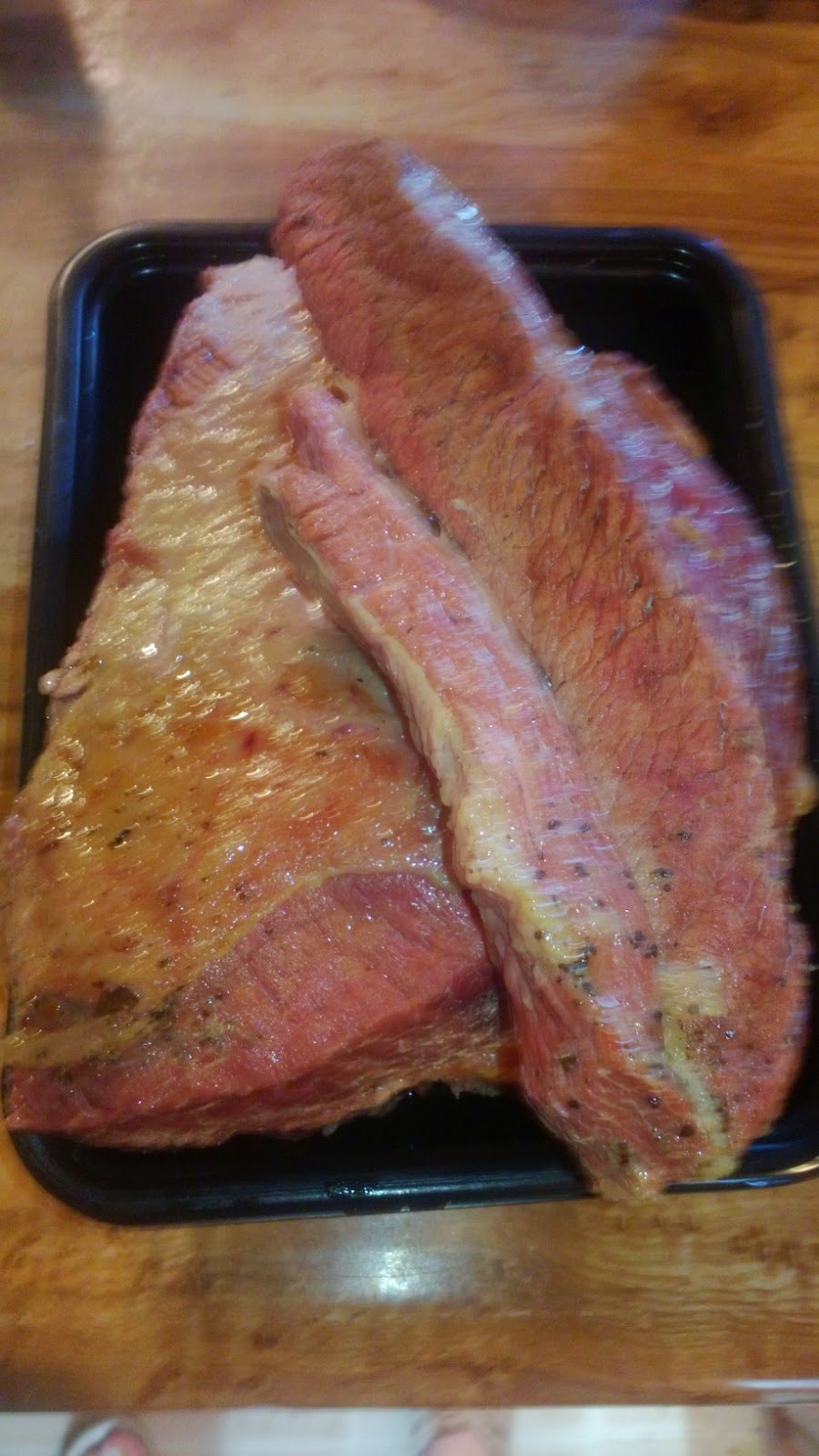Corned Beef
When we got our last steer butchered my husband asked, as
usual, what I wanted done with it. Since he used to be a butcher I usually just
tell him to decide. Then he gets the brisket ground into hamburger because he
doesn't like the brisket. In the store that is usually the cheaper cut and is
not tender like the rest of the cuts, which is why it usually goes into
hamburger or corned beef. Ever buy corned beef? I love corned beef; him, not so
much. Too bad this time. I told him I wanted the brisket saved. It came in two
very large slabs, so I had to cut them into smaller, more manageable pieces. I
finally had the time to make it this past weekend so I went to work and thawed
them out, and wouldn’t you know it, when he got a look at the smaller slabs, he
decided he wanted to make bacon out of a couple of them. He said if it was
raining, he’d smoke it and if not he’d be planting corn or plowing fields. It
isn’t raining and I do not mess with his smoker. At any rate, after he tasted
my corned beef, even he had to admit it wasn’t bad. Below is my process and
recipe for corned beef.
Cut brisket into small slabs if they are cut very large.
Otherwise they won’t fit into any freezer bags for marinating and I don’t have
a pan or a large enough oven for them full sized.
You Will Need:
Gallon Sized Zip-Type Freezer Bags
Morton Tender Quick (gives the meat its red color and salty taste- also used to make bacon and ham)
Cooking Oil or Light Olive Oil
Water
Vinegar (Cider is best but white works just fine too)
Pickling Spice
Whole Dried Cayenne Pepper or Crushed Red Pepper (hot)
Whole Pepper Corns
Whole Bay Leaves
Whole Mustard Seed
Onion Slices
Course Canning Salt or Non-Iodized Salt
Directions:
Rub each slab of
brisket with 1/3 cup of the Tender Quick on all sides and ends/edges. Place one
slab of brisket (two if they are really small) into each gallon sized zip-type
freezer bag. Place one whole dried cayenne pepper or 1 teaspoon of the crushed
pepper, 1 whole bay leaf, 1 teaspoon each of whole pepper corns and whole
mustard seed and 1 tablespoon of the pickling spice and several large slices of
onion to each bag. Add ¼ cup oil, 1 cup vinegar and 2 cups water and getting as
much air as possible out of the bag, zip it shut so that nothing can leak out.
Refrigerate overnight.
The next day, drain the bags and remove the slabs of meat –
do not rinse the slabs- and place them into a large roasting pan along with the
onion slices. Pour in just enough water to barely cover the meat (it makes its
own juice as it cooks). Add 1/8 cup canning salt or non-iodized salt, cover the
pan and bake at 325° F. oven for about five hours. Remove from oven and drain
well. Place the cooked meat (without the onions) into a smaller pan and cover
with foil, sealing well, and cool in refrigerator several hours or overnight
until well cooled. Any remaining broth will congeal. Place each cooled slab
(getting as much of the congealed broth as possible off the meat) into vacuum
seal bags and seal. If you don’t have a vacuum sealer, then use regular freezer
bags but remove as much air as possible. Freeze until ready to use or keep some
in the fridge for immediate eating.
Vacuum sealed for the freezer
Please be aware that corned beef is traditionally high is
sodium. You can reduce it in the cooking time if you wish, but it won’t taste
quite the same.
For corned beef like you find in a can, run some of the
corned beef through a food processor and freeze or refrigerate until set in a
well packed freezer bowl. Just dip the bowl in some hot water and it should
slide right out of the container. If frozen, thaw in refrigerator before
slicing.


